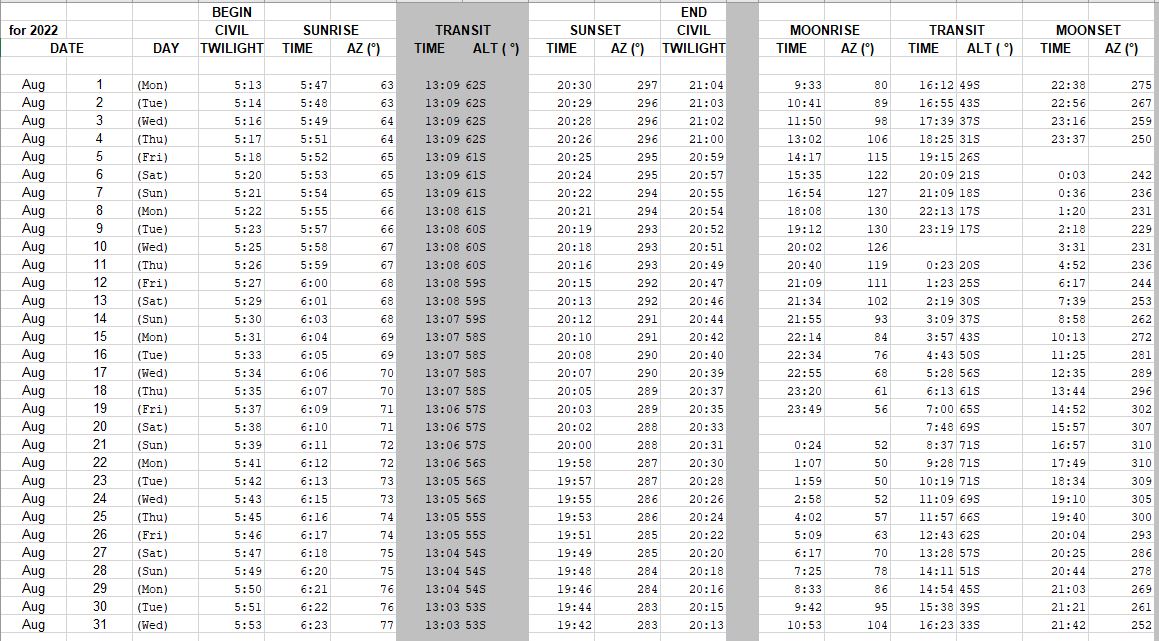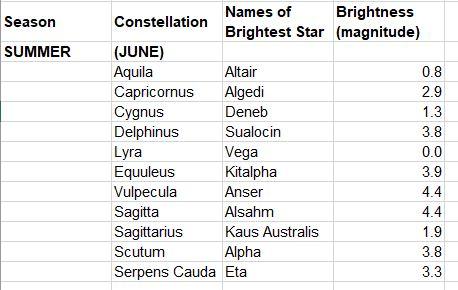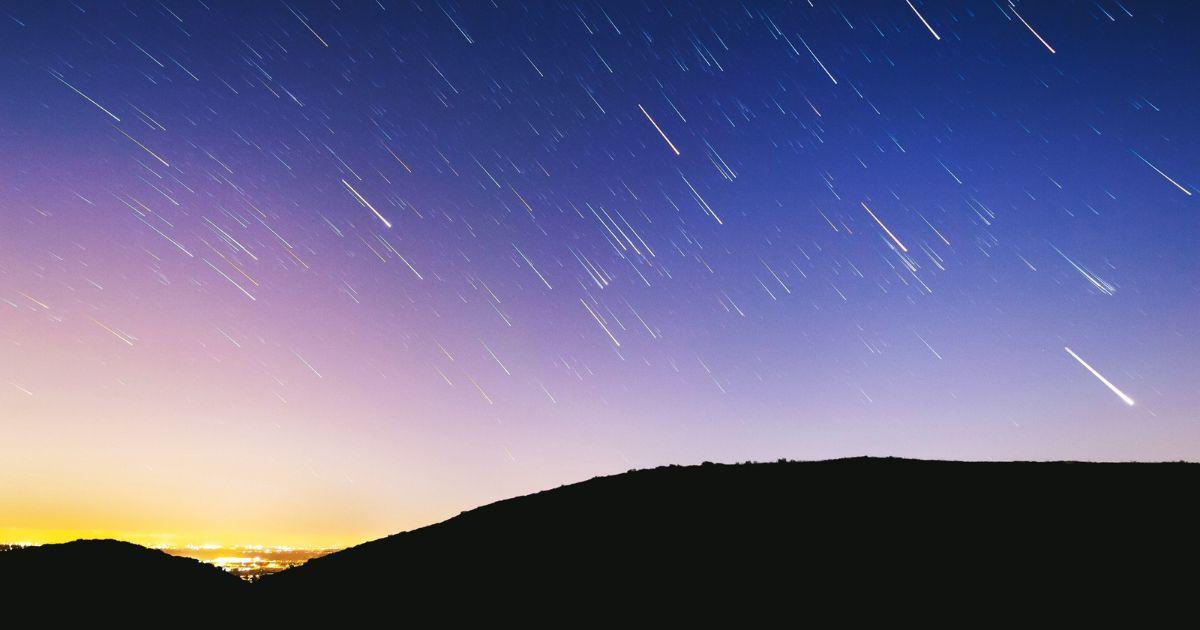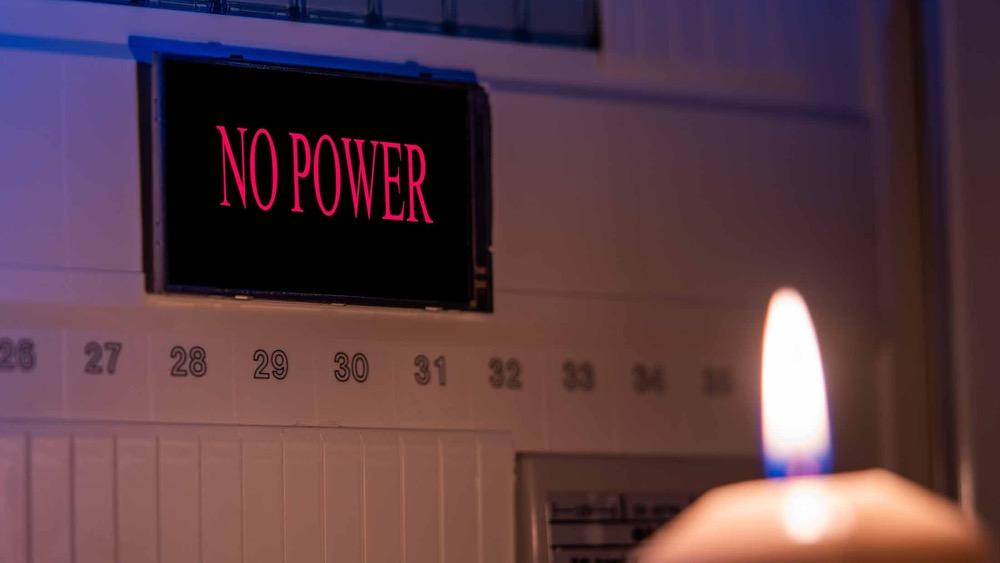Saturn will lead the bright full Moon across the sky on the night of the Perseid meteor shower. The meteor shower peaks on August 12/13 but they can be seen for a week or two on each side of the maximum night to avoid the full light of the Moon.
Following two hours behind the Moon is Jupiter. If you hold binoculars very steady, you may be able to see the Galilean moons as they slowly orbit the planet. Watch them shift position from night to night.
AUGUST 2022
5 1st Qtr. Moon
10 Sun enters Leo, 20:28, Moon at Perigee 13:09
11 Full Moon
12 Maximum night for Perseids meteor shower
14 Saturn at Opposition
15 Sagittarius on meridian and highest in southern sky at 10
19 Last Qtr. Moon
22 Moon at Apogee 17:52
27 New Moon, Mercury Max. Elongation in Evening Sky

Main Meteor Showers
Meteor showers are best observed after midnight when our hemisphere is ploughing into the meteor stream. Although the duration of the most active portion of the shower is short, some shower meteors can be seen many days on either side of maximum.
There are about a dozen significant meteor showers each year. This is a list of only the three major ones that have different “characters”.
The Quadrantids radiate from an area 20-degrees east of the Big Dipper’s handle. The short duration for the shower is somewhat balanced by the possible bright “fire balls” that are produced. And, the just-after full Moon on January 3/4 that will reduce the visibility of the fainter meteors and makes this an unfavourable year for the shower.
The Perseids are the premier shower of the year. Its long duration will bridge cloudy nights. However, the near full Moon on August 12 makes this a poor year to observe this shower.

Dates for the Phases of the Moon

Planetary Configurations
When at Opposition, planets will appear on the opposite side of the sky from the Sun – very roughly on the meridian at midnight. Conjunctions are when the planet has the same “longitude” as the Sun. A Superior Conjunction is when the planet is on the other side of the Sun, and an Inferior Conjunction is when it is between the Earth and the Sun. Only Mercury and Venus can be at Inferior Conjunction. Maximum elongation is when Mercury and Venus appear farthest from the Sun in our sky. This occurs either in our morning eastern sky (mor.) or our western evening sky (eve.). Do not apply the Ottawa-correction times to the times in this table.

Prominent Constellations by Seasons

Brightest Star

One of Canada’s foremost writers and educators on astronomical topics, the Almanac has benefited from Robert’s expertise since its inception. Robert is passionate about reducing light pollution and promoting science literacy. He has been an astronomy instructor for our astronauts and he ensures that our section on sunrise and sunset, stargazing, and celestial events is so detailed and extensive it is almost like its own almanac.














